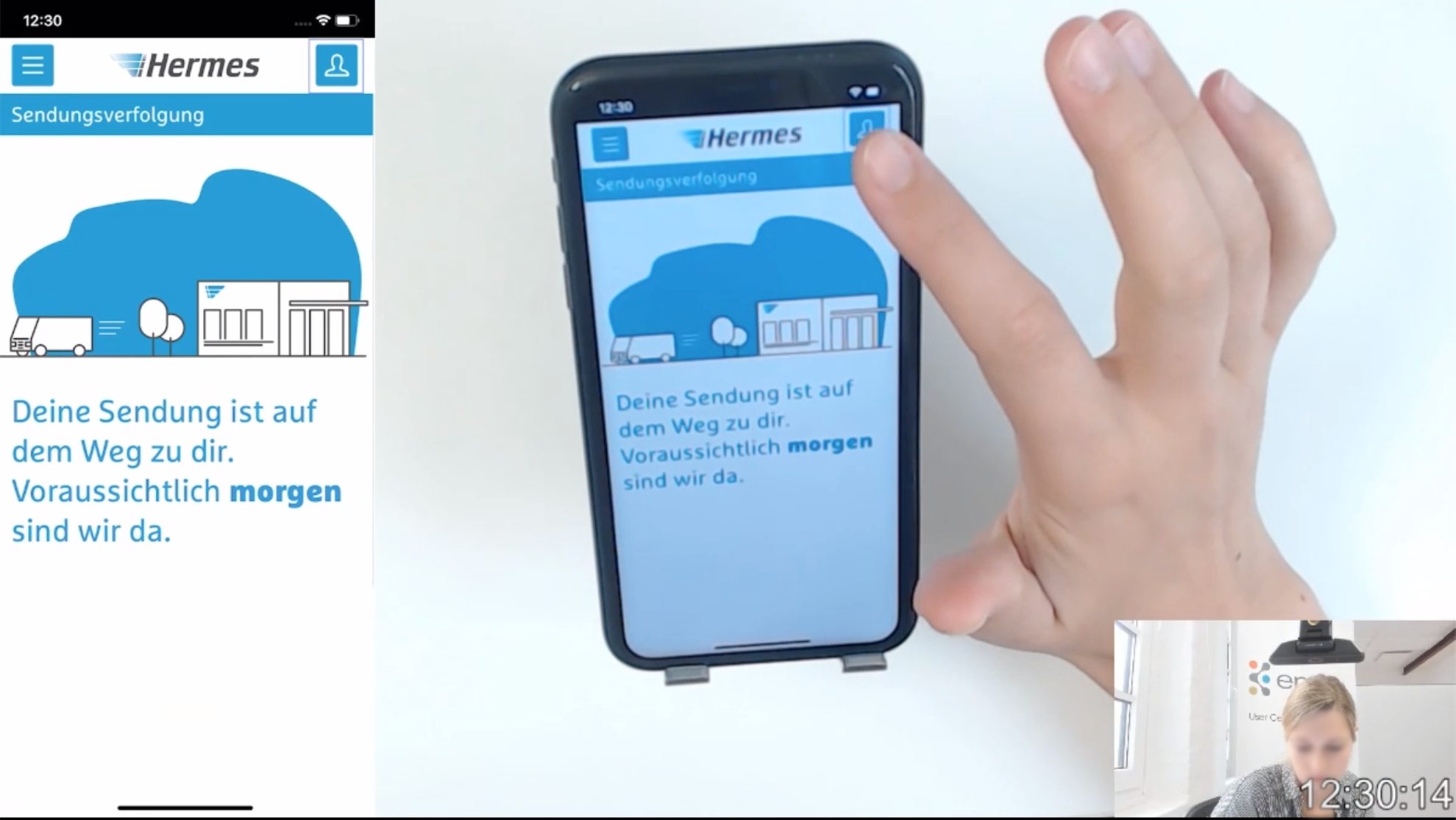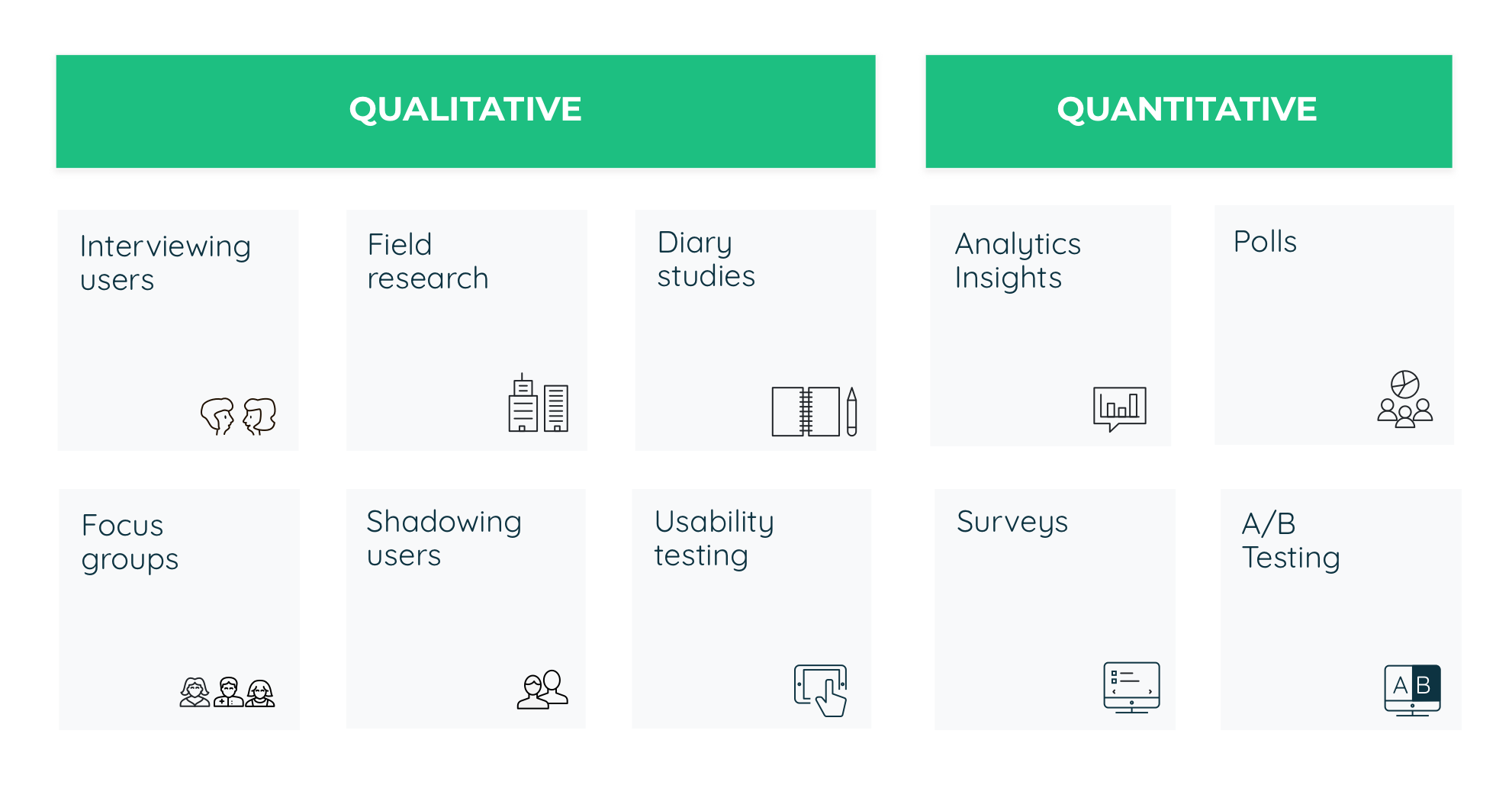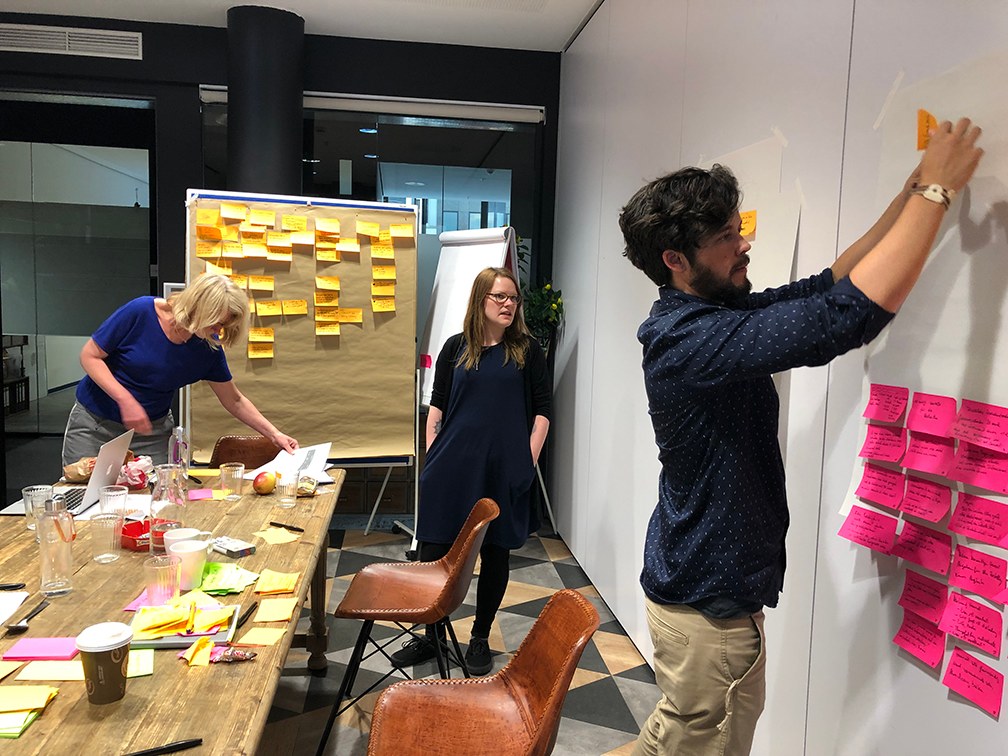
Gathering user insights
- Name:User research
- Purpose:Needs, goals and behavior of users
- Used at:Most projects
- Involved roles:User researcher, UXD, Analyst
The starting point for successful user experience design: User research
User research can be divided into two categories: qualitative and quantitative research. Insights derive from different sources. In qualitative research you usually interview your users whereas in quantitative you basically try to make sense of the data from surveys, analytics and polls. Qualitative research should always complement quantitative research in order to discover needs, intentions, goals.
A often used example is the interpretation of website metrics like duration and number of page views in a session in eCommerce. But higher longer duration and more page views can indicate that search or the navigation system fails to provide the users with relevant information. Only asking your users will provide you with answers.
Definition and main purposes

User research encompasses all activities and methods to observe and understand people interacting with digital services and products. There are two subsets: qualitative and quantitative research. Interviews, field studies or focus groups will generate qualitative insights. Whereas tracking systems like Analytics, surveys and polls will provide you with quantitative data, which should be used complementary to qualitative data.
My user research capabilities
I strongly advocate for user research in any assignment. I have done crowd usability testings, interviews, shadowing, card sorting and tree testing to evaluate and optimise the information architecture and on the quantitative side I have worked with multivariate testing and used surveys.
Dedicated researcher versus UX designer?
Without the budget user experience designer often fill the gap when it comes to user research as I did in many assignments. But this is not the optimal choice because there is a certain role conflict involved.
As a user experience designer and member of the development team you sympathise with your users, always trying hard to help them accomplish their goals. A a researcher this is not the case. You should not sympathise with users in interviews or usability testings and certainly refrain from helping them complete tasks and assignments. Like scientific researcher you want to take an objective perspective and don’t pet the mouse you send through a labyrinth.
Good interviewers have conducted many interviews, they will pretend that they do not have a clue about the topic, even pretend they are not part of the team to avoid sympathy bias. They can use silence to tease interviewees into talking. Experienced researchers will usually bring deeper and less biased user insights. Which help you avoid designing with wrong assumptions.
Qualitative user research

The toxic ingredient: bias
With qualitative research you always get bias. Bias is an inclination of users and researchers toward the socially accepted or expected behaviour and statements. Bias is toxic for designers because it can lead to false assumptions about users motivations, needs and behaviour.
Still the champion: the interview
Interviews need to be well planend and prepared. As with all user research it begins long before the actual interviews take place. Lets have a look into some activities:

Recruiting
In first place designers and stakeholders need to agree on whom they consider as their target audiences. In a B2B context this can be very specific and result in a highly selective recruitment.
When talking to existing users you also might want to consider talking to prospects instead of your own customer base. For existing products or services there might be enough data on demographics of your user base, for new products you have to imagine or ideate on future users.
Do it yourself or external recruiting?
Do not underestimate the effort for recruiting users. Usually it is a good idea to outsource the whole recruiting and scheduling to a specialised agency. This will give the research and design team more time to plan the questions, come up with hypothesis about excepted outcomes and eliminate biased questions.
Incentives for interviewees
When recruiting with an agency interviewees usually get an incentive. The incentive will greatly lower your non-show rate. Which is important, because otherwise your team can not work and won’t obtain any insights. Be prepared to spend a fair amount of money for gift vouchers, around 100 € per hour, if your are looking for highly specialised user this can be much more.
The field manual
To be able to plan interview sessions you need to know how long your interviews are going to be. Usually interviews range from halb an hour two one and a half hours. A field manual with all the questions you want to ask is an essential step in the preparation. When interviewing you should more or less stick to this guideline to make answer comparable.
The user consent form
You also need consent forms, especially if you want to record in audio, video or photos your sessions. Before the actual interview begins the interviewees are asked about their preferences concerning recording and sign the consent form.
Sharing insights
The more members of the team can observe the actual interview the easier the alignment on implications and outcomes will be. Agencies specialised in user research have rooms for the interviews and observation rooms for team members.
With teleconferencing software widely available it is easy to recreate such a setup almost everywhere. But only the interviewer and another team member should actually be in the same room with the interviewees in order not to intimidate them.
Taking notes
Even if you are alone with the interviewee you should always take time to take notes or record the whole session. In a team setup everybody of the observing team should take notes individually along the way. Afterwards the researcher, the user experience designer or a facilitator like an agile coach should align the team on the observations and the insights.
Alignment of insights

When the whole team and even stakeholders take part in the observation alignment on insights is crucial. The best way to do this is a workshop. Online and offline work well - offline certainly has the edge over online in terms of fun and collaboration.
In an offline setting, everybody should have their notes mostly in form of post-its and group them collaboratively in categories along the user journey. The main categories used: pain points, smaller and minor usability issues, points of excitement and joy and direct user quotes.
An alignment session can easily be combined with an ideation session on potential solutions to the problems encountered. Online you will use any whiteboard tool at hand and basically do the same as in an offline session but it tends to be harder for a larger group to stay focused.